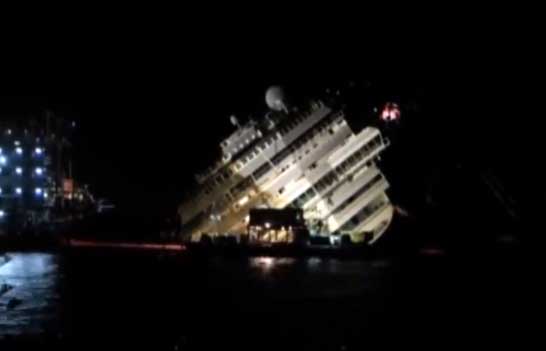Two years after the Costa Concordia ran aground off the coast of Italy, a new report says that passenger safety and security has improved on cruise ships since the accident. However, there are still lapses in the public reporting of crimes on these megaships.
Released Jan. 13 on the second anniversary of the accident that resulted in the death of 32 people, the report by the General Accountability Office found that cruise lines have implemented many new measures to shore up safety and security onboard vessels that visit U.S. ports. Many of these improvements were required by the Cruise Vessel Security and Safety Act (CVSSA) of 2010, including having rail heights of 42 inches and reporting allegations of certain crimes to the FBI.
GAO said that 11 of the 15 requirements contained in the law have been implemented, and the remaining are in the works, as they involve developing new technologies to detect a person who has fallen overboard, implementing a video surveillance system to document crimes on a vessel and certifying trainers who teach ship personnel about crime scene preservation.
Although the FBI and Coast Guard publish information on reported cruise ship crimes on a website, the GAO said this data has many limitations as it doesn’t offer the entire picture about the nature of onboard crimes, how recent they are, and how they are investigated and resolved. The reporting of sexual and physical assaults, which are the leading crimes on cruises, is now required by law but is limited and not always useful to the public, the report said.
Following the Costa Concordia accident, the cruise industry, the International Maritime Organization and the Coast Guard took steps to improve passenger safety.
The Cruise Lines International Association, which represents over 98 percent of cruise companies in the U.S., identified 10 safety-related policies in 2012 that were adopted by all members by July 2013. These include improvements to vessel passage planning and life jacket stowage. The IMO also adopted a regulation to be effective in January 2015 requiring passengers to participate in safety and evacuation drills before or just after departure rather than within 24 hours of departure.
The Coast Guard, the report added, has worked with the industry for several years to plan and hold disaster exercises, including one in April 2013 to practice a mass rescue from a cruise vessel.
The report’s conclusions were welcomed in Congress, which requested the study last year. “I am pleased that the cruise industry has taken notice and is well on its way to implementing needed changes to safety and security policies on cruise vessels,” said Rep. Bennie Thompson, D-Miss., ranking member of the House Homeland Security Committee.





